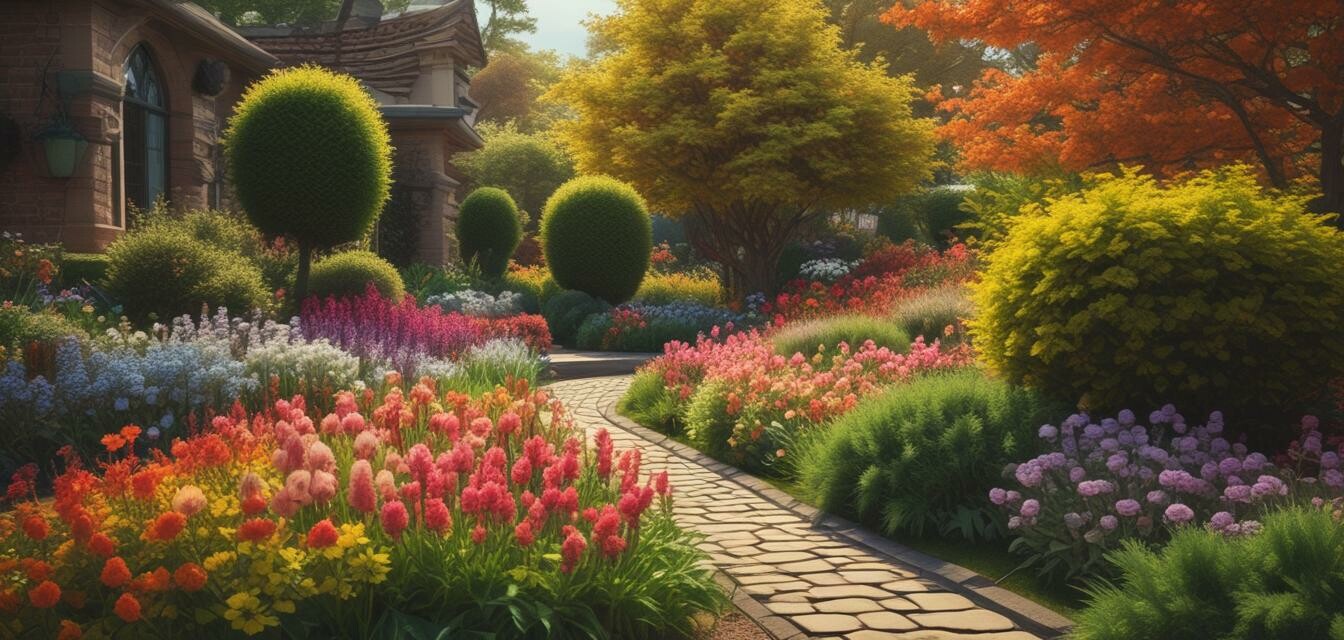
Creating Seasonal Displays: Tips for Year-Round Beauty
Key Takeaways
- Seasonal displays enhance your garden's aesthetic appeal.
- Choosing the right plants and colors for each season is crucial.
- Incorporating decorative elements can elevate your displays.
- Maintenance and planning ensure longevity in seasonal beauty.
Creating seasonal displays in your garden can significantly enhance its beauty, offering fresh visuals throughout the year. With careful planning and thoughtful selections, you can transform your outdoor space into a stunning showcase of nature's seasonal changes. This article will guide you through the essential tips to craft captivating displays, ensuring your garden remains a visual treat all year round.
Understanding Seasonal Displays
Before diving into the how-to's, it's essential to understand what seasonal displays entail. These displays are curated combinations of plants, flowers, and decorative elements designed to capture the essence of each season, be it the vibrant colors of spring or the earthy tones of autumn. Here’s a closer look at how each season can influence your gardening decisions:
| Season | Characteristics | Plant Options |
|---|---|---|
| Spring | Vibrant blooms, fresh growth, and bright colors. | Tulips, Daffodils, and Primroses. |
| Summer | Lush greens, bold color schemes, and extended blooming periods. | Sunflowers, Roses, and Hydrangeas. |
| Autumn | Warm colors, falling leaves, and harvest-themed displays. | Asters, Mums, and Ornamental Grasses. |
| Winter | Subtle colors, winter textures, and evergreen elements. | Pine, Holly, and Winterberry. |
Choosing the Right Plants
Selecting the appropriate plants for your seasonal displays is vital. Here's a process to guide your choices:
- Research the plants that thrive in your growing zone.
- Consider the bloom times to ensure continuity in flowering.
- Think about foliage color and texture to add interest.
- Choose plants that complement each other in height and spread.
Color Schemes to Consider
Different seasons call for varying color palettes. Here’s a practical approach:
- Spring: Pastels like pink, lavender, and light yellow.
- Summer: Bold and vibrant hues such as bright red, orange, and blue.
- Autumn: Warm tones such as deep red, orange, and gold.
- Winter: Gentle whites, blacks, and earthy greens.
Incorporating Decorative Elements
To take your outdoor displays to the next level, consider these decorative elements:
- Garden sculptures: They add artistic flair to your display.
- Seasonal lights: Enhances evening aesthetics.
- Planters: Elegant planters can define spaces and add style.
- Decorative stones: These can be used to create walking paths or borders.
Maintenance and Care
To keep your seasonal displays looking fresh and inviting, maintenance is essential. Here are some tips:
- Regularly check for pests and diseases to prevent damage.
- Water appropriately, particularly during dry spells.
- Prune dead flowers and foliage to promote healthy growth.
- Feed your plants with eco-friendly fertilizers to encourage vigor.
Seasonal Display Ideas to Inspire You
Here are a few creative display ideas to keep your garden looking fabulous:
- Spring: Create a pastel tulip and daffodil border enhanced with decorative birdhouses.
- Summer: Mix vibrant sunflowers with tall ornamental grasses, utilizing driftwood features for contrast.
- Autumn: Use pumpkins as planters amid colorful chrysanthemums and fall foliage.
- Winter: Set up evergreens adorned with string lights and rustic ornaments for a warm ambiance.
Final Thoughts
Seasonal displays can truly transform your garden, providing year-round beauty and a canvas for your creativity. By carefully selecting plants and incorporating various decorative elements, you can ensure that your outdoor space is not only functional but also a stunning visual delight. For more ideas and tips on garden aesthetics, be sure to explore our Garden Inspiration category.
Pros
- Enhances the curb appeal of your property.
- Encourages year-round engagement with the outdoors.
- Allows creativity and personalization in your gardening.
Cons
- Can require significant time and effort in maintenance.
- Some plants may not thrive in specific climates.
- Initial setup costs can accumulate depending on materials and plants chosen.
Explore More Options
For additional resources on garden materials and tools, check out our pages on Garden Tools and Eco-Friendly Fertilizers. Embrace the beauty of your garden and enjoy the seasonal changes in style!